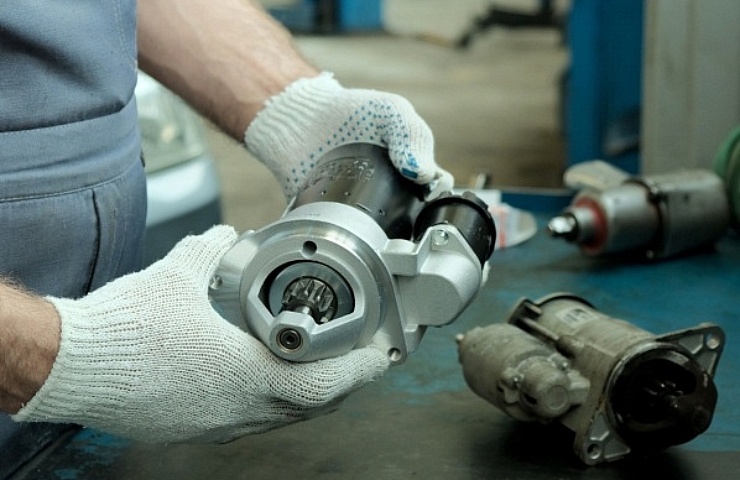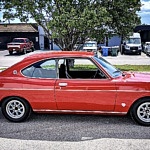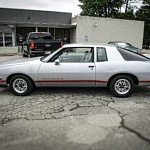Contents
While it only takes one action to initiate a start, many things have to happen before the engine fires up.
- First, the engine’s engine control module (ECM) triggers the fuel pump to prime, preloading the fuel system pressure.
- Then, it runs through all its protocols, checking every sensor and powering up the ignition system.
This all takes milliseconds. Your key or a button initiates the process, but the ECM generates the start signal. Most cars built before the 2010s use a simple relay switch to trigger the starter.
Once the vehicle is ready, a signal is sent to the starter motor, which engages two different mechanisms working together to spin the engine. Then the engine starts. The starter is the only way to turn the engine fast enough to start unless you have a manual transmission.
How the Starter Works
There are two main mechanisms inside the starter: the main starter drive and the solenoid. How these units operate depends on the age and make of the vehicle. The starter drive itself is typically an electric motor that uses a set of brushes to spin an armature shaft.
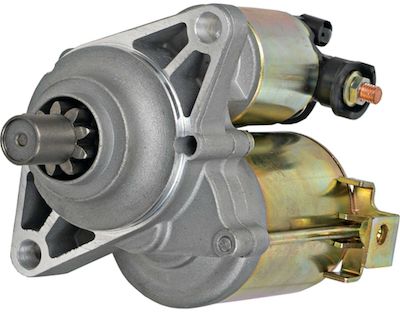
1998-2000 Honda Civic 1.6-liter starter
A direct-drive starter is where the drive motor directly spins the pinion gear, though some modern vehicles use a gear reduction starter, which allows the main drive motor to be smaller and results in a more compact unit. It uses the same basic type of motor as the direct drive, but the pinion gear is separate from the starter motor. Most gear reduction starters use a drive gear on the main motor with an intermediate idler gear that meshes with a centrifugal clutch attached to the pinion gear assembly. Then the pinion gear is actuated by a solenoid plunger.
Pinion Gear Drives
All starters have a pinion gear that meshes with the ring gear on the flywheel or flexplate. For the starter to engage the ring gear, the pinion gear has to shift out from the starter. The pinion gear is only engaged to the ring gear when the starter operates. This is why you will sometimes hear the starter whirring, but the engine doesn’t spin: The pinion gear didn’t engage.
How the pinion gear is actuated determines the style. The most common types of automotive starters are plunger-actuated and Bendix-actuated.
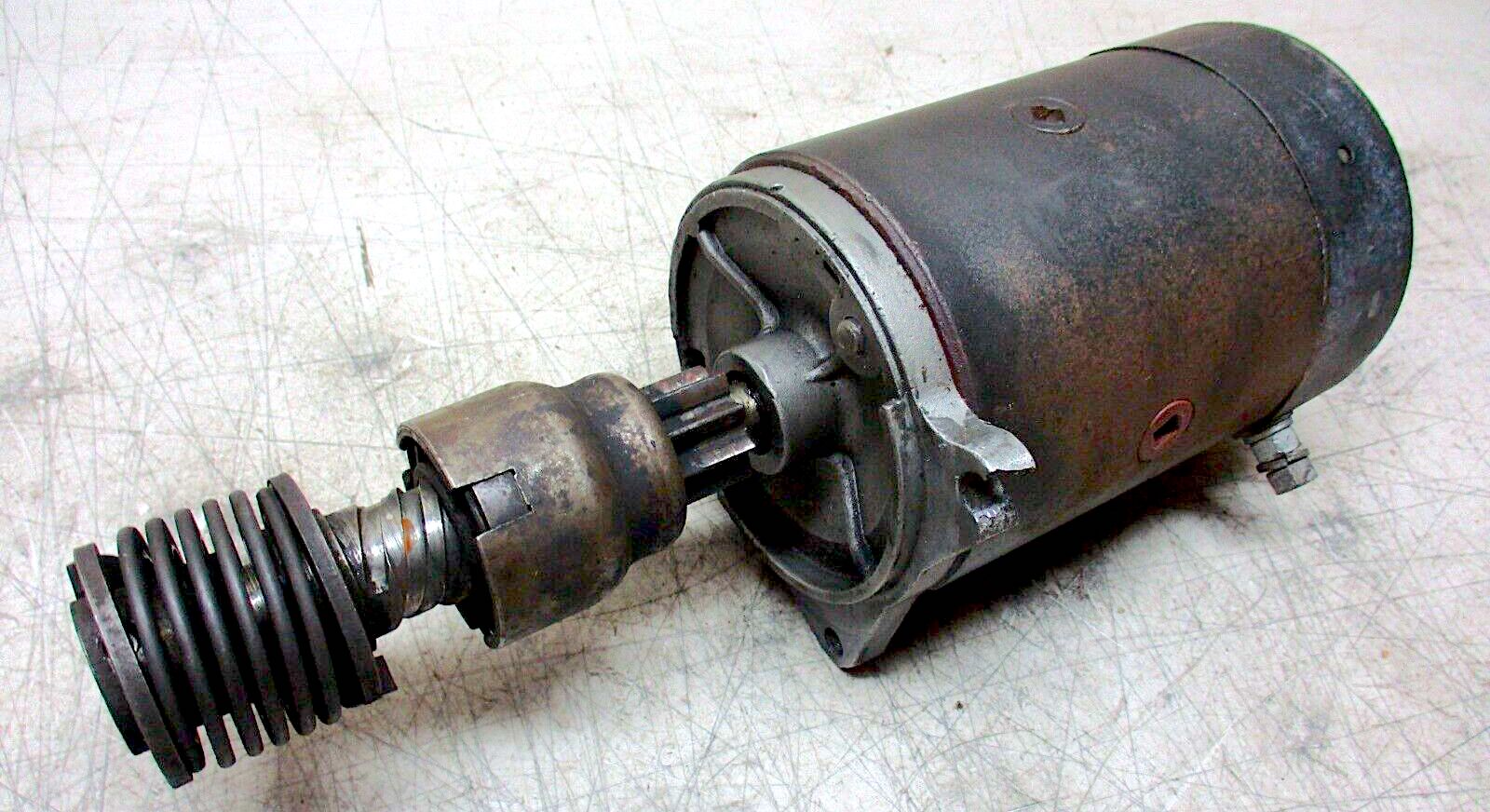
1956-1961 Ford Thunderbird – Bendix Drive Starter Motor
Bendix-actuated starters were very common in older vehicles, particularly Fords. The Bendix assembly consists of a drive shaft, pinion gear, spring, and lock washer, and the assembly connects to the main starter motor armature shaft. This type of starter does not have a large solenoid mounted to the starter assembly, as the solenoid only provides the electrical switching rather than actuating the pinion gear.
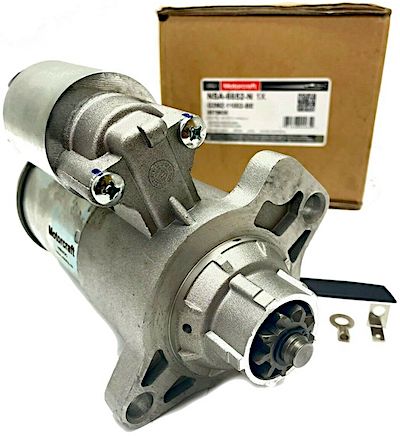
2002-2005 Ford Thunderbird Motorcraft starter motor
When the engine starts, the ring gear’s increased speed counters the Bendix assembly’s speed, removing the inertia from the heavy-gauge spring and causing the pinion gear to pull away from the ring gear. This is one of the main disadvantages of the Bendix drive: The starter will disengage if the engine tries to start but doesn’t.
Most engines since the 1970s use plunger-actuated starters. Instead of a spring, this style uses a mechanical plunger and fork arrangement driven off the solenoid. When the solenoid powers up, it does two things: closes the contacts to energize the main starter drive and pushes out a plunger that moves the pinion gear outward to mesh with the ring gear.
Once the engine starts, a clutch on the pinion gear allows it to spin faster than the starter motor so it does not burn up.
Shop now for starter motorsSymptoms of a Dying Starter
A starter doesn’t usually just go bad, but it won’t last long when it starts to show warning signs. A discharged battery can also show these same signs, so check the battery first for a good charge.
Grinding – If your starter grinds when you try to start the engine, stop immediately. Usually, this is a sign that the pinion gear is worn or damaged or the ring gear on the engine is damaged. This can cause thousands of dollars in repair costs if the ring gear gets chipped or the teeth are dog-eared.
Clunking or buzzing – This could be the starter missing the teeth of the ring gear. The clunk is the gear hitting the ring gear, the solenoid plunger moving without the main drive motor spinning, or an internal failure inside the starter. The starter is locked up if there is just a buzz or hum.
Free-spinning – If the starter spins fast with a whirring sound, the plunger or Bendix is not engaging. This can happen occasionally, but the starter is damaged if it happens more than once in a few tries.
What to Do If the Starter Fails
If the starter isn’t working, first check your electrical connections. The battery terminals, starter battery lead, and trigger wires can get corroded or damaged and must be replaced. If the starter is not activating at all, then an electrical solution is most likely. Should the starter click or buzz, the fault could still be electrical. If you own an older Ford or other Bendix-style starter, check the remote-mounted solenoid first, as they are notorious for failing.
If the electrical connections seem good, you can often get a dying starter to work with a physical strike. Here is a fun trick: Get a small hammer, pipe, or even a two-by-four, and tap the starter body. You do not need to whack it hard, just some “love taps.” This often frees a stuck solenoid that is keeping the starter from operating. Sometimes this works for weeks or doesn’t work at all, but it is worth trying if you can access the starter.
If these two options don’t work, the starter is dead, and replacement is the only option.
Read: Signs of a Bad Car Battery vs. Alternator
Shop now for starter motorsHow to Replace a Starter
There are a few steps for replacing most starters:
- Disconnect the battery negative terminal.
- Raise the vehicle so you can fit under it with room to work and support it with jack stands on concrete or support ramps for soft ground, like asphalt or gravel.
- Locate the starter under the vehicle. For most vehicles, the starter will be on the passenger side, where the engine mates to the transmission. In some vehicles, the starter is accessible from under the hood.
- Disconnect the main battery power lead and then the trigger lead. These are typically nuts and lock washers, but some vehicles use plugs for the trigger wire.
- Unbolt the starter, then slide it out from the transmission and away from the engine. Starters are also fairly heavy, so lifting and lowering the motor can be difficult.
- Install the new starter in reverse of the removal. Some engines may require shimming to align the starter. You can verify this by searching your specific make and model.
Cost to Replace a Starter
The average starter costs around $150 but can be as much as $400. Most starters are readily accessible, making labor cheap. The minimum is around $150. However, it is sometimes much more expensive because the starter is inside the engine. Some small cars are so compact that one side of the suspension has to be removed, but most vehicles are easy to do.
The average lifespan of a starter motor is 100,000 to 150,000 miles, depending on the design. High-horsepower engines put more strain on the starter due to high compression, so this is where gear-reduction starters shine.
For most vehicles, starter replacement is a 30-minute to one-hour job, including disconnecting the battery and physical installation. The hardest part is often removing the wires, as they can be challenging to reach when the starter is installed.
Shop now for starter motors
